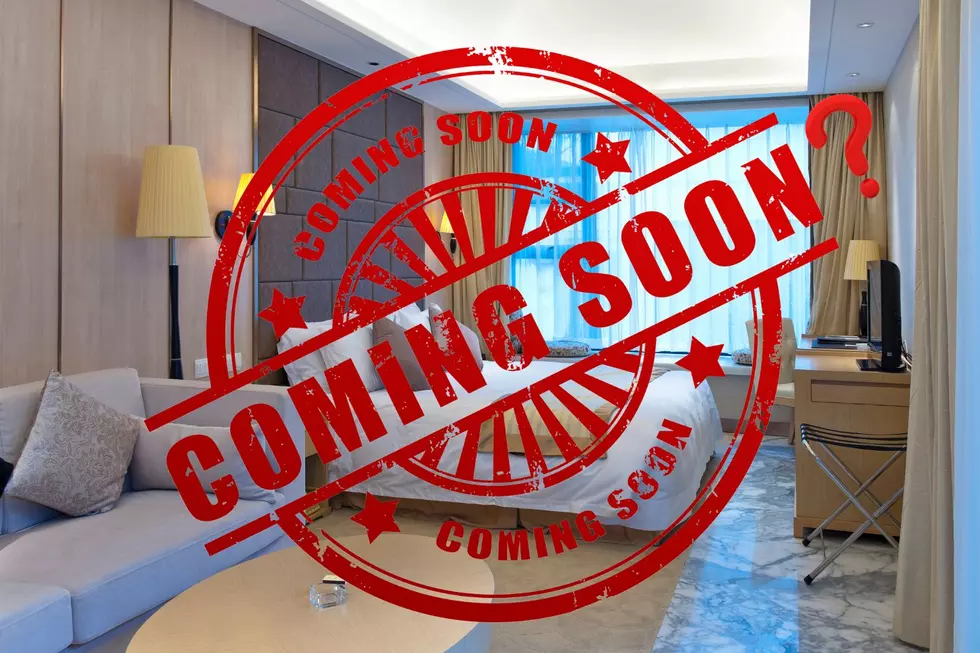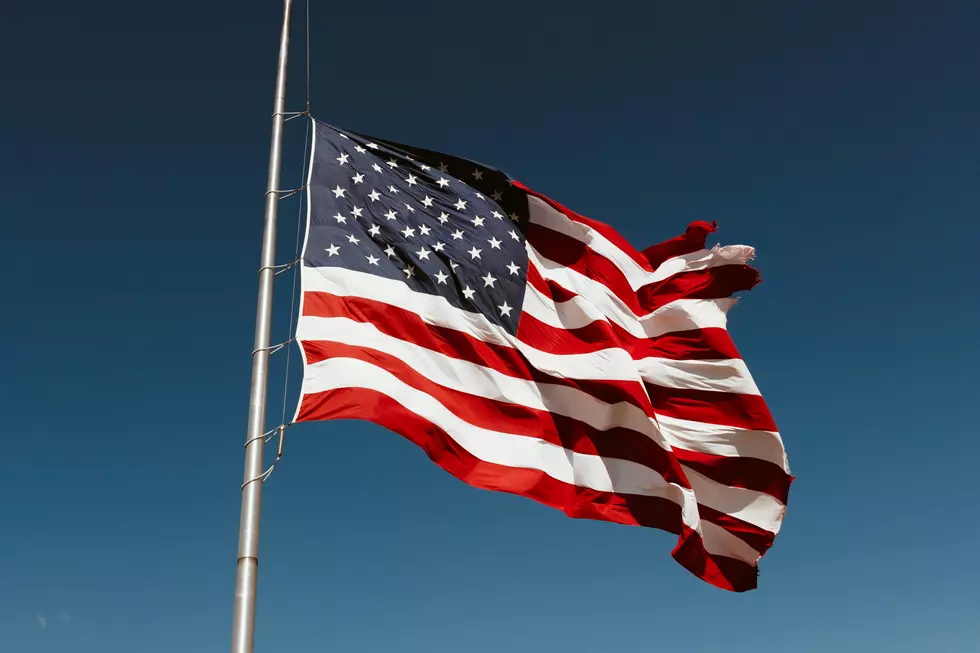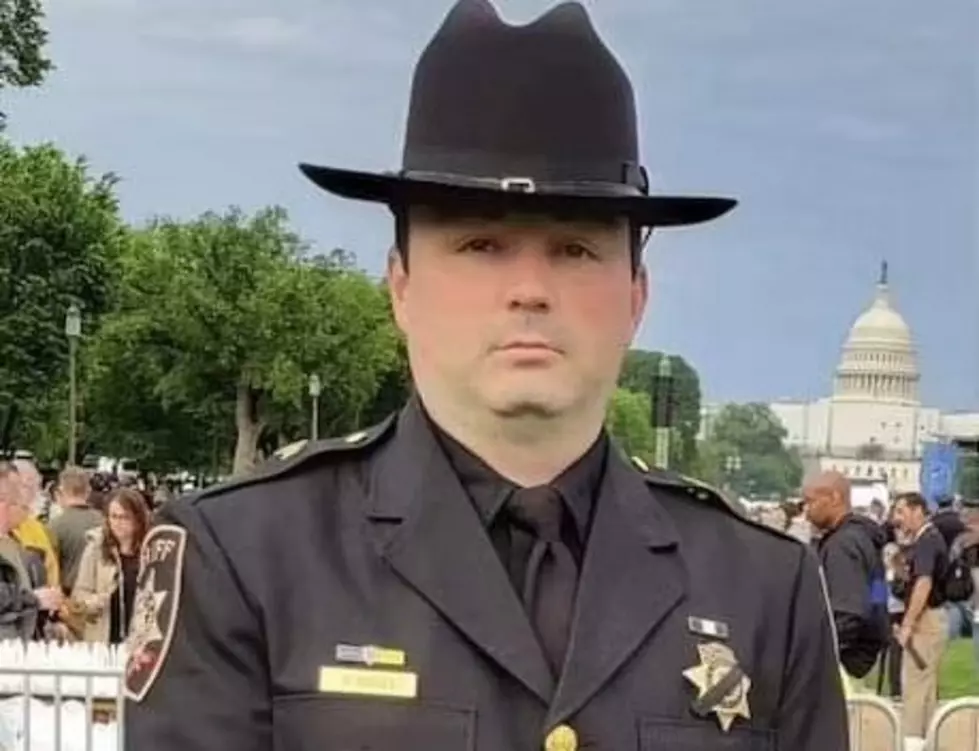
Northern Lights Spectacular to Dazzle Upstate New York Skies Tonight
Grab the binoculars, a dazzling aurora borealis could light up the skies tonight.
Just Look Up!
Upstate New York could get lucky on Thursday night because of some exciting developments in outer space. A recent solar flare has triggered a chain of auroral activity, and that has meteorologists hopeful New York will have a front row seat to the ultimate celestial event.
Currently, the areas pretty much guaranteed to see the Northern Lights tonight into tomorrow are those in Northern New York and around the Rochester area. As for Central New York, we're in the "possible" zone.
While our chances of seeing the aurora borealis is up to luck, the good news is the current forecast calls for clear skies tonight and that means we won't have any weather interference if the lights come our way.
What is an aurora borealis?
As explained in an earlier post, the Northern Lights are triggered when magnetic solar winds slam into Earth’s magnetic field. That interaction causes the upper atmosphere's atoms to glow - and the strength of the impact determines the light's intensity.
Those winds are triggered when coronal mass ejections, otherwise known as CMEs, impact the Earth's atmosphere. CMEs are used to describe sudden bursts of charged particles (electrons and protons) from the sun, which shoot outwards at speeds close to 2,000 miles per second. That's roughly 7.2 million miles per hour.
Interestingly, CMEs are the explosion of the sun's plasma and magnetic material - and it is strong enough to affect navigation systems like compasses, as well as radio signals. They also are what causes auroras.
In short, these lights seemingly appear out of thin air because of how fast these solar winds move. When they collide with the gasses in our atmosphere, they light off billions of flashes of lights, which is why the aurora borealis looks like its dancing in the sky.
The Current Prediction for CNY
NOAA’s Space Weather Prediction Center and the University of Alaska Fairbanks Geophysical Institute have both updated their auroral activity forecasts and predict a geometric storm could impact the region.
For the NOAA, they base auroral activity on a strength scale of 1 to 5 - with the higher number being more favorable. They have currently set their forecast to G3
Read More: What's The Difference Between Lake-Effect Snow and Blizzards?
The University of Alaska Fairbanks uses a geomagnetic index, known as Kp, to help determine the likelihood of a light show in the night skies. The index rates auroral activity between 0 and 9, with the higher numbers meaning better activity.
At the start of the week, activity was set at Kp 5, which means auroral conditions are favorable.
Both agencies say Canada is in a very good position to see the lights, as well as Alaska and the northern parts of North Dakota and Minnesota. However, based on the projected band of the aurora, it also encompasses northern New York and the Rochester area.
Below that is what is considered the "possible" zone depending on how the winds shift. Central New York, as well as several other northern states - such as Wisconsin, Ohio and Vermont, are part of this zone.
Said the Geographical Institute about tonight's possible show:
Auroral activity will be high. Weather permitting, highly active auroral displays will be visible overhead from Inuvik, Yellowknife, Rankin and Iqaluit to Juneau, Edmonton, Winnipeg, Thunder Bay and Sept-Iles, and visible low on the horizon from Seattle, Des Moines, Chicago, Cleveland, Boston, and Halifax.
Friday also could produce a show during the nighttime hours, but the changes are a lot lower.
When Will We Next See the Northern Lights?
Good news is we could see more auroras in the coming months because of the current cycle our sun is approaching. Right now it is heading toward the peak of what is called "Solar Cycle 25," which is an 11-year process where the magnetic poles of the sun flip.
Those flips are what trigger CMEs and other aurora fuel. This cycle is predicted to reach its peak between January to October 2024.
Read More: Central NY Town Named Most Underrated Winter Destination in U.S.
In short, it means more potential Northern Lights shows for us!
If you're unable to see the aurora for whatever reason tonight, you can always catch the Canadian Space Agency stream a live feed of the skies in Yellowknife, which is an auroral hotspot.

Northern Lights Captured Lighting Up Hudson Valley Skies
Photographer Captures Stunning Northern Lights Show in Adirondacks
Gallery Credit: Credit - Polly McAdams
Photographer Captures Stunning Northern Lights In Old Forge
Gallery Credit: Credit - Polly McAdams
More From WIBX 950









